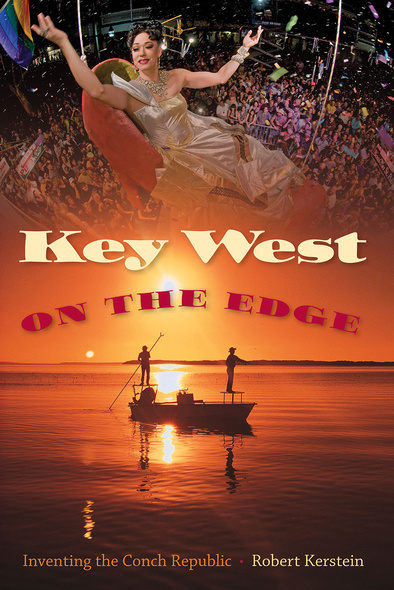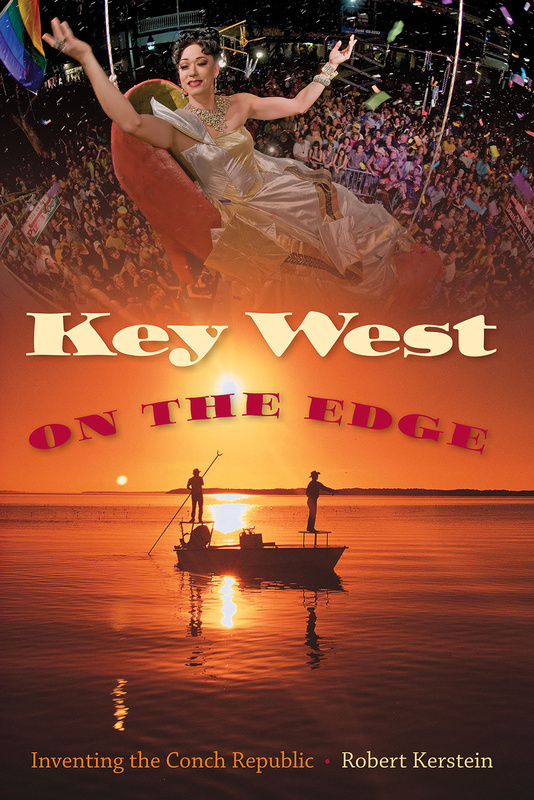
Key West on the Edge
Inventing the Conch Republic
How the unique island city came to be a major tourist destination
Florida Historical Society Charlton Tebeau Book Award
Key West lies at the southernmost point of the continental United States, ninety miles from Cuba, at Mile Marker 0 on famed U.S. Highway 1. Famous for six-toed cats in the Hemingway House, Sloppy Joe’s and Captain Tony’s, Jimmy Buffett songs, body paint parade "costumes," and a brief secession from the Union after which the Conch Republic asked for $1 billion in foreign aid, Key West also lies at the metaphorical edge of our sensibilities.
How this unlikely city came to be a tourist mecca is the subject of Robert Kerstein’s intrepid new history. Sited on an island only four miles long and two miles wide, Key West has been fishing village, salvage yard, U.S. Navy base, cigar factory, hippie haven, gay enclave, cruise ship port-of-call, and more. Duval Street, which stretches the length of one of the most unusual cities in America, is today lined with brand-name shops that can be found in any major shopping mall in America.
Leaving no stone unturned, Kerstein reveals how Key West has changed dramatically over the years while holding on to the uniqueness that continues to attract tourists and new residents to the island.
“Skillfully weaves economic, social and cultural accounts that are both informing and fascinating. [Kerstein’s] fresh historical perspective reads like fiction, featuring a lively cast of characters in a vivid setting full of surprises.”—Tampa Bay Magazine
“A real-deal history about fast change in a strange place.”—Daytona Beach News-Journal
“[Kerstein] begins with the earliest visitors, tuberculosis patients in the 1830s, and takes the reader through the impacts of the railroad and the Overseas Highway, as well as cycles of real estate boom and bust.”—Tampa Bay Times
“A holistic history of tourism in one of the Sunshine State’s most recognizable cities. . . . Clarifies misconceptions and dispels myths while making a welcome addition to Florida historical literature.”—Journal of Southern History
“Kerstein does a commendable job conveying the tension inherent in Key West’s long history with commercial tourism.”—Southern Historian
“A richly detailed local story.”—Florida Historical Quarterly
"Key West is an island steeped in lore, from Hemingway to Fantasy Fest, but behind the façade of Margaritaville lie buried tensions and conflicts in need of examination. Kerstein provides a much-needed dose of reality in the form of a masterfully researched study of the island’s tourism industry, from the shadowy power brokers who pull the strings to the underpaid workers who serve the drinks. From seedy bars to trendy discos, Kerstein has managed to capture the improbable mixture of this strange island, while offering a cautionary tale of tourism run amok."—Lee Irby, author of 7,000 Clams"An exemplary study and a cautionary tale that should be read by everyone interested in the suicidal course of a society driven by an irrational and self-destructive compulsion to erase differences in the pursuit of the almighty dollar."—Brewster Chamberlin, author of Mario Sanchez: Once upon a Life
Robert Kerstein is professor of government at the University of Tampa and the author of Politics and Growth in Twentieth-Century Tampa.





